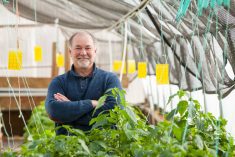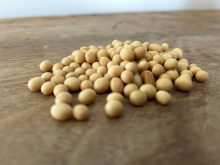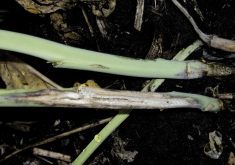This year’s canola crush is on pace to be the highest ever, which is good news for producers.

“It’s great for farmers,” said Renn Breitkreutz, vice-chair of the Alberta Canola Producers Commission. “Our product is in demand and we’ve seen significant investment in crush capacity over the past couple of years and now it seems like everything is up and running. We’re seeing good demand and the competition is great for our product.”
It’s also a boon for a provincial economy that has been battered by the plunge in oil prices, added Breitkreutz, who farms near Onoway.
“The increased crush capacity is good news from a Canadian perspective in terms of local jobs and local processing,” he said.
The weekly crush hit a record 185,219 tonnes in the first week of March and then blew by that a week later with 188,081 tonnes before dropping a bit in the third week of March. And it’s been a strong story throughout the 2015-16 crop year, with the weekly crush consistently topping 150,000 tonnes (versus a weekly average of 141,000 tonnes in the previous crop year).
Crushing capacity has almost doubled in Western Canada since 2010, but even with four crush plants — in Lloydminster, Fort Saskatchewan, Lethbridge, and Camrose — Alberta is only able to crush around 30 per cent of its production. (In Saskatchewan, it’s around 50 per cent and in Manitoba, 75 per cent.)
But the overall rise in capacity coupled with Cargill’s crush plant in Camrose, which opened last summer means there is more robust competition for seed. But there have been many spinoff benefits, said the general manager of the Alberta Canola Producers Commission.

“We’re getting more value added in Canada and Alberta and that benefits everybody,” said Ward Toma, adding local processing has also increased the availability of canola meal for Canadian and American livestock markets.
The additional plants also give producers more flexibility.
“Sometimes the crushers have different delivery parameters,” said Toma. “So they may not have as many issues with dockage and may be a bit more flexible with high dockage seed than some of the export buyers. This is a direct benefit.”
In other cases, a farmer could have heated seed, and a line elevator would not want to put it in its storage facilities, so it will put it in the crusher.
The new crush capacity could also make a difference in rail infrastructure. Oil is less bulky than grain, so fewer cars are needed to move product. This won’t make a huge difference if there’s a major rail snafu, but it does have an impact.
Read Also

New crop insurer policy enables easier startup for faba beans
Agriculture Financial Services Corporation updated its normals for faba beans, which may open the door for more Canadian producers to feel comfortable growing the pulse crop in the future.
China has recently used non-tariff trade barriers to manage seeding imports, which results in the country buying canola oil instead of seed. If China stopped buying seed, Canada would have had to scramble to deliver seed to other markets, and the price would drop. But the increased crush capacity in Canada allows the country to continue selling the oil overseas.
“They still get the canola oil, but we get to process it, so we get the benefits,” said Toma.
















